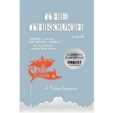In this inventive and affecting novel, the barriers between the real world and the worlds of the imagination, magic, and folklore become porous at best and sometimes dissolve altogether. As disorienting as these breaks with reality are for the couple at the center of the story, Adrian Dussett and Ben Hughes, they ultimately prove revelatory, pushing Adrian and Ben to confront personal difficulties that have troubled them for years and created a divide in their relationship.
A native of New Orleans, Adrian was traumatized not just by Hurricane Katrina but by an atrocity that preceded it: ongoing sexual abuse by a friend of her mother’s. Instead of supporting Adrian and confronting her abuser, her mother defended him, accusing Adrian of lying about what had happened. After Katrina, Adrian is plagued by guilt for not having saved her mother from drowning during the ravages of the storm, which also killed Adrian’s abuser. Despite these traumas, she has managed to make a new life for herself in a small Alabama town, where she lives with Ben and works at a charitable investment firm. To function in the present, she tries to keep the pain of her past locked away. She also tries to limit her emotional vulnerability, which Ben perceives as a lack of affection. (For much of the novel, he knows nothing of Adrian’s history of abuse, or of her fraught relationship with her mother.)
For his part, Ben feels directionless and disappointed in himself. An aspiring novelist with a bad case of writer’s block, he takes little satisfaction from his job as an adjunct English instructor, and the prospect of becoming a tenured professor seems both distant and unappealing.
Early in the novel, both Adrian and Ben begin to experience breaks with reality as they’d known it, pushing them into unsettling territory. Separately, they encounter a jogger who represents a different mystery to each of them. To Adrian, the jogger is a shape-shifting figure who sometimes appears to be her late mother; other times, she’s a doppelganger: a version of Adrian who will not allow her to forget the traumas she experienced in New Orleans. In either form, the jogger seems determined to force Adrian to reckon with her past and her feelings of guilt.
Ben sees the jogger as just another stranger, at first. Then, he discovers that she knows his college nickname and uncomfortable details of his personal history. When he asks if she’s a salesperson for Amway, she remarks:
The jogger begins to nudge Ben toward his own reckoning, and the scenes with her are a delight, woven with insight, and with a sense of humor that is one of the many pleasures of the novel.
For both Adrian and Ben, perhaps the most daunting break with reality is a ship that’s started to appear above them, now and then speeding downward, as if it might crush them under its prow. It turns out that the craft is a former slave ship, which is named for, and under the control of, Yemaya, a water goddess who featured in a folktale that Adrian had heard as a child. According to the tale, Yemaya seduced then drowned the ship’s captain, and as she brought the forces of the sea to bear on the ship, all the enslaved passengers flew off to freedom.
Yemaya shows Adrian and Ben that she is still able to harness the forces of destruction. Yet she also seems to be looking out for both characters, helping to bring them–sometimes, literally–toward confrontations with problems past and present, or toward more promising futures. Johnson makes Yemaya and the other folkloric and magical elements of the novel feel as urgent and real as all the difficulties that Adrian and Ben are facing in their day-to-day lives.
Another important magical element of the novel is the titular Through, a former Black neighborhood near Adrian and Ben’s home. Though it appears to be a vacant lot, every now and then, its former occupants and buildings seem to shimmer back to life. The Through is also known as Okahika, a Black ghost town that exists simultaneously in several Southern states and is featured in a book of folklore that Adrian received as a child.
Living on the outskirts of the Through is a character known as Cut Mary. Though Ben first believes she’s just a family friend of a college buddy, she’s more than that: a witch-like figure who seems to have made an appearance in Adrian’s book of folklore. Cut Mary serves as a kind of guide to both Adrian and Ben, helping Adrian come to terms with her doppelganger and ghost mother and all that they represent, and helping Ben understand a crucial truth about himself, a truth that might explain the divide between him and Adrian.
In a scene leading up to this revelation, Cut Mary tells Ben, “Facts concern what we can see, but truth concerns what we can’t see. Truth is wisdom, Ben, guidance. Truth helps us to make decisions when the facts don’t point one way or another.”
Although a ghost, a doppelganger, a ghost town, and a sky-sailing ship have entered the realm of the visible for Adrian and Ben, they reveal thought-provoking truths nonetheless–just one of the rewarding aspects of this captivating, original novel.
Would My Pick be Your Pick?
If you're interested in ________, the answer may be "Yes":▪ Magical realism
▪ Folklore
▪ Stories about coping with or confronting trauma






